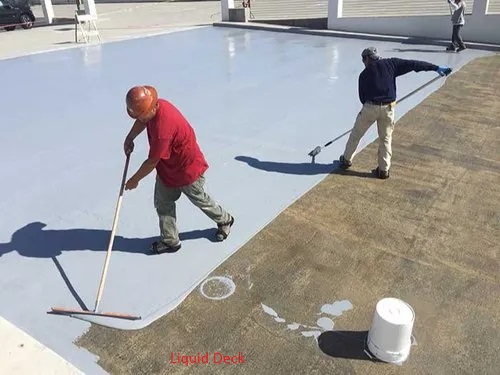Waterproofing work refers to the process of making a surface or structure resistant to the penetration of water or moisture. It is typically performed on areas such as roofs, basements, bathrooms, balconies, terraces, and foundations to prevent water damage, leaks, and structural deterioration. The specific steps and methods involved in waterproofing can vary depending on the type of surface and the extent of the waterproofing required. Here is a general description of the waterproofing work process:
Surface Preparation: The first step in waterproofing work involves preparing the surface. This includes cleaning the area, removing any loose debris, and repairing any existing cracks or damage. The surface needs to be smooth and free from dust, dirt, or grease for effective waterproofing.
Priming: Priming is done to improve adhesion and ensure proper bonding between the surface and the waterproofing material. A primer is applied to the surface, allowing it to penetrate and seal any porous areas.
Waterproofing Material Application: There are various waterproofing materials available, such as liquid coatings, bitumen membranes, cementitious coatings, or polyurethane-based solutions. The chosen material is applied according to the manufacturer's instructions, ensuring complete coverage of the surface. Multiple layers may be required, depending on the specific waterproofing system.
Reinforcement: In some cases, a reinforcing layer may be applied along with the waterproofing material to provide added strength and durability. This can include using fiberglass or polyester mesh, or applying additional layers of membrane or coating.
Detailing and Sealing: Waterproofing work involves paying attention to critical areas such as joints, corners, pipes, or drains. These areas are carefully sealed using appropriate sealants, tapes, or waterproofing compounds to prevent any potential water ingress.
Curing and Drying: After the waterproofing material is applied, it needs to cure and dry according to the manufacturer's instructions. This typically involves allowing sufficient time for the material to set and form a watertight barrier.
Testing and Quality Assurance: Once the waterproofing work is completed, it is essential to perform tests to ensure its effectiveness. This may involve conducting water tests or using specialized equipment to verify the integrity of the waterproofing system.
It's important to note that waterproofing work should ideally be performed by experienced professionals who have expertise in the specific type of waterproofing required for the surface or structure. Following proper installation techniques and using high-quality materials are crucial for long-lasting and effective waterproofing.

